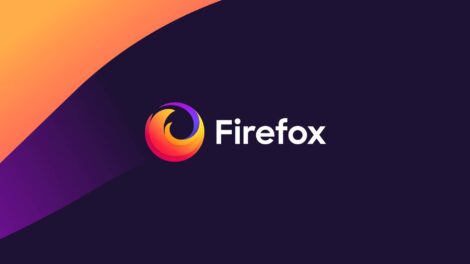Major changes may be coming to Amazon’s popular Fire tablet lineup, with reports emerging that future models will abandon Google’s Android ecosystem in favor of Amazon’s own Linux-based operating system dubbed Vega.
This huge software shift promises more flexibility and control for Amazon’s tablets and streaming media devices going forward. But it also entails significant risk if the transition is not handled carefully with developers and customers.
In this guide, we’ll dig into the implications of Amazon potentially moving Fire devices over to Vega, including:
- The reported capabilities of the new Vega OS
- Motivations behind Amazon moving away from Android
- Potential benefits the Vega platform offers Amazon
- Key disadvantages and risks involved
- What it means for the future of Fire tablets and e-readers
- How customers may be impacted by the software change
- What developers face supporting a new Amazon OS
- When the Vega switchover could begin
- How Amazon’s content ecosystem ties into the OS decision
- Whether Vega is destined for Amazon’s other hardware
The payoff from reduced Google dependency could be huge if Amazon can minimize disruption across its ecosystem. But executing a platform migration of this scale poses challenges Amazon must navigate smoothly.
Introducing Vega: Amazon’s New Fire OS
Vega is reportedly a new lightweight operating system developed in-house by Amazon for its consumer devices. Vega will still be based on Linux just like Google’s Android OS.
But Amazon engineers are building Vega from the ground up to power Fire tablets, e-readers, streaming media players, and potentially other devices.
Key attributes of Vega based on reports:
- Designed first and foremost around Amazon ecosystem integration
- Optimized specifically for Amazon’s tablets and hardware
- Built with Amazon’s Appstore as the primary storefront
- Leverages Amazon’s cloud services like AWS and Alexa
- Offers robust support for Google Play and apps
- Emphasizes speed, simplicity, and seamless content consumption
- More locked down and secure than Android
The goal is differentiating through deep ties between software and hardware. But Amazon may still incorporate Android open source components where beneficial.
Why Amazon Is Motivated to Move On From Android
Amazon has relied on Android to power Fire tablets since 2011. But a combination of factors seemingly motivated developing its own OS alternative:
More Freedom and Control
Vega gives Amazon full flexibility over software capabilities and updates rather than relying on or being constrained by Google’s vision.
Reduced Dependence on Google
Amazon reduces strategic reliance on Google services by decoupling its ecosystem.
Improved Hardware Optimization
Amazon can deeply customize Vega to optimize performance on its tablets.
Enhanced OS-Hardware Synergies
New unified OS allows tighter integration between Fire tablets and features like Alexa.
Differentiation from Android Devices
Vega provides software differentiation from other Android tablet makers.
Expanded Content and App Sales
Potential for increasing Appstore downloads and Prime subscriptions by easing Android barriers.
Controlling its ecosystem end-to-end reflects Amazon’s ambition to dominate every facet of the user experience.
How Amazon Could Benefit from Developing Its Own OS
The shift to Vega could yield meaningful advantages for Amazon if executed strategically:
Lower Costs
Bringing OS development in-house may lower software licensing costs long-term.
Long-Term Update Control
Amazon can deliver updates and new features on its own schedule rather than rely on Google.
Deeper Hardware-Software Integration
Custom OS can maximize hardware capabilities like camera and multimedia.
More Seamless Ecosystem Integration
Native OS allows better experience across Prime Video, Audible, Kindle, Alexa and more.
Enhanced Differentiation
Fully customized OS offers stronger competitive differentiation.
More Prominent App Store
Dedicated home screen placement for Amazon’s Appstore exceeds Android limitations.
Improved Security
In-house development allows tighter control and focus on security.
However, realizing benefits depends on overcoming difficult technology and business hurdles.
Key Disadvantages and Risks of Switching Fire Devices to Vega
Despite potential upside, leaving Android entails major technology and business challenges:
Software Development Lift
Building and maintaining a robust operating system requires tremendous investment.
Potential Compatibility Issues
Apps may require porting and adaptation to run on Vega, hindering selection.
User Experience Disruption
An unfamiliar OS risks confusing and alienating existing Fire user base.
Developer Support Challenges
Amazon will need to convince developers to build apps for a third mobile ecosystem alongside iOS and Android.
Increased Responsibility for Updates
Amazon bears sole responsibility for software updates rather than sharing load with Google.
Security Uncertainty
Securing a new OS also brings security unknowns that take time to uncover.
The scope of the task underscores why few companies attempt ground-up OS development today. But Amazon has resources to potentially pull it off.
Impacts on Fire Tablets and E-Readers
If Vega succeeds, Amazon’s Fire tablet and e-reader products could see improvements like:
- Faster performance from lower level software optimization
- More intuitive UIs customized to Amazon device form factors
- Deeper Alexa, Audible, Prime Video and music integration
- Potential expansion into new device categories like home appliances
- Ability to bypass some Google Play restrictions for more content options
- Better bi-directional hardware-software capabilities
But the transition risks a rough user experience if not handled gradually and carefully. For now, benefits remain speculative until Vega devices actually ship.
How an Amazon OS Transition Could Impact Customers
For customers, a switchover to Vega could bring mixed repercussions:
Potential Upsides:
- Improved speed and performance
- More seamless Amazon ecosystem integration
- Expanded digital content selection in some areas
Potential Downsides:
- Compatibility issues preventing older apps from working
- Confusion navigating an unfamiliar user interface
- Loss of Google services and native Android support
- Disruption of previous app and content purchases
Amazon will need to entice both developers and consumers to embrace its new platform. That hinges on providing a smooth transition and clear benefits.
What OS Change Means for Fire Tablet App Developers
Developers face two key decisions if Amazon switches Fire tablets to Vega:
Whether to Build Vega-Native Apps
- Assess potential monetization from Amazon’s audience reach.
- Determine if APIs and tools sufficiently support development.
- Evaluate if Amazon offers adequate revenue share terms.
How to Handle Existing Android Apps
- Audit whether existing app codebases require changes for Vega compatibility.
- Decide if worth investing resources to port apps to Vega.
- Weigh releasing Vega-specific apps or maintaining single Android codebases.
Developer support is crucial, but Amazon’s content negotiating leverage and large user base provide strong incentives to at minimum maintain compatibility.
When the Vega OS Transition Could Begin
Amazon has not revealed a timeline, but the Vega switchover seems to be nearing readiness after years of development.
The shift could possibly begin by late 2023 based on reports, starting with new tablets and e-readers. However, an incremental rollout minimizing disruption seems most prudent:
- Initial testing on new niche devices like Kindle to minimize risk.
- Focus on mediaconsumption experiences first where Amazon ecosystem is strongest.
- Slowly expand Vega to more Fire tablets as the OS matures.
- Maintain Android compatibility layer temporarily through transition.
- Prioritize stellar services like Prime Video that highlight Vega benefits.
Early adopters will act as test subjects as Amazon navigates pivoting its ecosystem to the new platform.
How Vega Reinforces Amazon’s Content and Commerce Strategy
Vega exemplifies Amazon’s focus on owning end-to-end user experiences and funnels:
- Defaulting Amazon content stores encourages direct monetization.
- Removes middlemen who harvest Android user data.
- Optimizing the OS specifically for Amazon media consumption.
- Tighter Prime membership retention through exclusive perks.
- Reduces distractions competing with Amazon properties.
- Promotes Amazon Pay and Amazon logins for purchases elsewhere.
For Amazon, more control over software to maximize commerce is well worth the effort.
Is a Wider Vega Rollout Across Amazon Devices Likely?
Fire tablets seem the logical starting point for Vega, but expansion to additional Amazon devices is possible:
Fire TV Streaming Media Players
Once proven on tablets, Fire TV would be a prime target to unify UIs and maximize Prime Video engagement.
Kindle E-Readers
Entry-level Kindle models could potentially run a lightweight variant of Vega natively for tighter integration with Audible and Amazon book sales.
Echo Smart Displays
Adapting Vega for Echo Shows would streamline leveraging Alexa capabilities.
Future Hardware Products
Any new Amazon-built devices seem likely candidates for being powered by Vega rather than Android.
The path beyond Fire tablets will depend on Vega’s capabilities maturing and adding value across different device categories.
Conclusion
If executed successfully, a Vega-powered software stack could give Amazon unmatched end-to-end control over the user experience and ecosystem. But realizing this ambition depends on overcoming non-trivial technology and business challenges in migrating from Android.
How Amazon navigates this transition will prove telling about its strategic bet on owning software alongside hardware. Limiting friction across customers, developers, and internal teams remains imperative to justifying the massive investment.
But for online retail giants, the long-term payoff from being untethered from third-party software dependence may warrant the short-term risks. The question remains whether Amazon has the technical prowess to migrate users to an all-Amazon world devoid of Google.










Add Comment